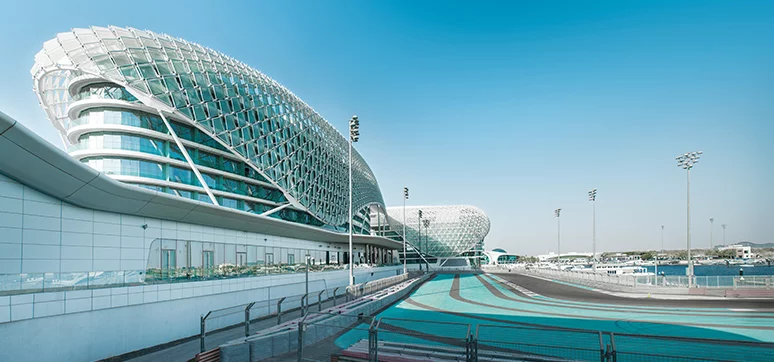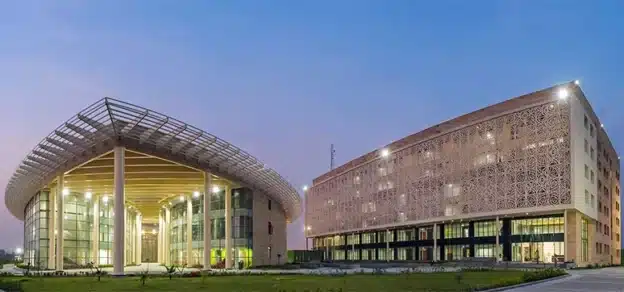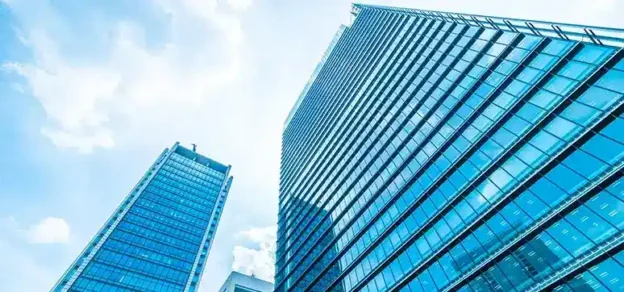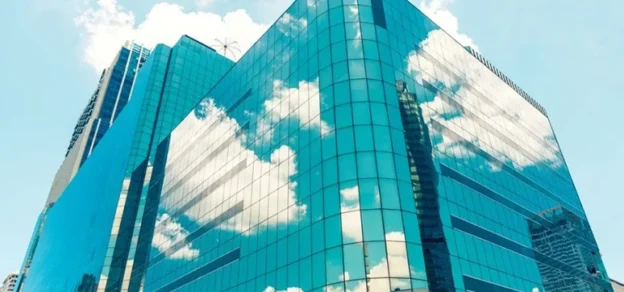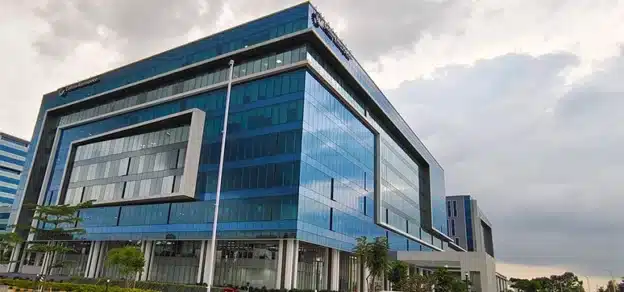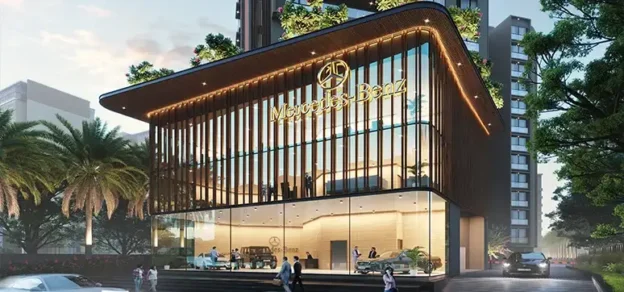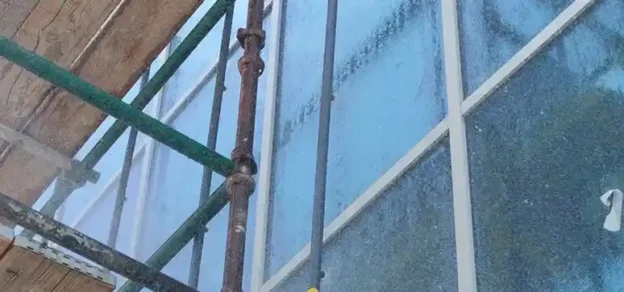When we saw a building, the first thing which attracts us towards it is the façade. Buildings with glass façades keep us mesmerised by the beauty it adds to the structure. The glass helps the building in connecting them with nature and the surroundings. We can see the use of glass in buildings in various forms, it is being used as insulation material, structural component, external glazing material, cladding material, etc. Glass as a building material delivers beauty, visibility, and light transmission. Glass transmits up to 80% of natural daylight and helps in energy and cost saving. Glass as become the most popular building material because of its versatile nature. The adoption of green technology in construction is also a major reason behind the growing demand for glass in building envelopes. Glass as a building material will always remain in demand.

How the architectural glass industry has transformed, what is its demand, what are its benefits and limitations when using it as a complete façade material, what future will it have?
These are the few important questions which the experts can answer better. To get those questions answered, we interviewed a few experts, and their responses are presented here.
Demand For Glass In Niche And Low-Rise Applications

Jasmin Hodzic, Marketing Director, Africa & Middle East, Guardian Glass, quotes “Glass is opening a world of endless possibilities for architects and designers. The use of glass in low-rise buildings is growing as building inhabitants are looking to increasingly be connected to their outside environment while increasing their comfort and wellbeing through the neutrality of glass colours. Glass has taken these factors to new levels and is increasingly becoming the building material of choice in fulfilling these expectations”.

The growing demand for niche products like the anti-reflection coating reflects the development in the market knowledge for different architects and clients, says Samih Yehia, Sales and Marketing Director, Emirates Glass LLC. With people coming from different background and clients that are exploring different markets for new ideas, the niche market in different high-performance glass is very challenging yet generate motive for the local factory to keep developing and investing in technological solutions. He adds, for the low-rise applications, Emirates Glass is the only company in the region that has two markets: the first market is through the final glass units sold directly to the contractors and the second one is through the raw glass stock sheets delivered to the glass processor.
As a mega-company, Emirates Glass cannot focus directly on the low-rise buildings with monthly production targets that exceed 80,000 sqm of final DGU glass. For this, Emirates Glass initiated the program of Approved Processor Partners (APP). This program is based on auditing different glass processing companies and gives them certifications to process the glass of Emirates glass for small projects. This growing market currently contributes more than 15% of the company turnover and continuously growing. The number of glass companies in the region reflects the high demand for this product and the stable growth that we keep witnessing in the last 15 years.
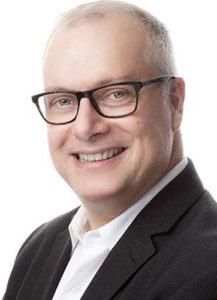
According to Alain Garnier, Manager – Sales & Business Development (Middle East), Saint-Gobain SageGlass, the demand for glass and glazing in the building is growing as people love to have views of the outside. The connection to the outdoors is essential for our well-being, and large windows are an essential part of fulfilling this need. People want to enjoy the daylight. At the same time, architects love to design with glass as an architectural element that is very versatile, durable and offers very sophisticated design possibilities. Glass gives architects a lot of design freedom. As a result, glass is used more and more on new buildings, and thanks to innovation, its properties allow for improved performances.
Trends In Architectural Glass
Hodzic believes that the architectural demand trends are keeping up with the same pace of evolution of our societies, with an increased desire for transparency and authenticity. With that being said, a strong trend to increase glazing surfaces on building envelopes can be seen. Because of the solar, sound and light transmittance properties of coated glass, architects are choosing this material to attend to that increased desire, designing buildings that not only look good on the outside, but that also makes life great on the inside.

Hodzic adds, moreover, that aesthetic preferences differ from region to region or even from country to country. For example, what we are seeing in the UAE is a trend where architects are looking for colour neutrality in glass, coupled with light grey glass colours for the exterior look and feel of the building.
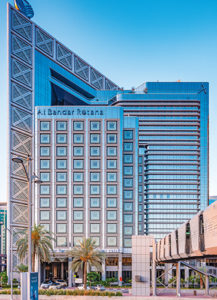
In Saudi Arabia, blue and bronze colours remain very popular. However, a neutral-looking and greyish hue façades trend gaining pace on highrise buildings can be seen.
According to Yehia, the trend of architectural glass is currently through the change in glass colours, combinations, sizes, and performance. The neutral colours that vary from light silver to light grey became the most popular colours, while the tinted glass market is shrinking. The safety requirement keeps increasing with more laminated glass is required now on the external glass, along with that the sizes of the glasses tend to shift toward jumbo glasses which increase the overall thickness of the glass and the performance of the glass keep increasing.
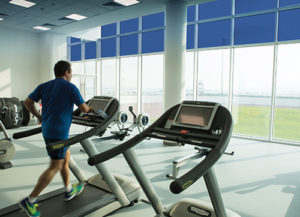
Currently, some projects are being executed with glass performance U-value close to what isolated walls can do.
Garnier says that the main trends in architectural glass in the Middle East are the development and installation of smart intelligent solutions like dynamic smart glass. Dynamic glass responds to three main requirements of the building, construction and real estate industry: Reduction in energy consumption and energy conservation, enhanced human experience and improved occupant comfort, and finally connectivity. Thanks to dynamic glass solutions, the façade of our building is becoming a connected IoT object. The Middle East has always been at the forefront of innovative architectural solutions, and we see the adoption of dynamic smart glass solutions increasing rapidly in the region.
Choice Of Glass For Windows / Effective Fenestration

Hodzic opines that glass solutions for buildings should help contribute to helping to make buildings more comfortable and energy-efficient while still enabling flexibility in design and aesthetics. Therefore, we see sustainable growth in demand for high-selectivity glass. This type of glass offers an optimal import of light transmission while reducing the amount of glare and heat moving through the glass. “To achieve those requirements, Guardian Glass is turning great formulas into superior products where, for example, we can today provide high-performance glass with a selectivity ratio above 2 (selectivity being the ratio between the light and heat transmittance),” says Hodzic.
According to Yehia, the night vision glass as well as taking an extensive interest with the architects to give the end-user the freedom to see through the glass during the night time and enjoy the skylines of the city The clients now are expecting the glass to provide high thermal and acoustic isolation, provide a neutral appearance by seeing wide-angle through the glass, having the glass as a safe choice that end users can trust living within a unit full of glass. Allowing natural daylight, the level of comfort to be maintained by allowing the right amount of daylight to pass through the glass and block the rest depend on the windows-to-wall ratio and reduce glare inside the unit and still the price remains affordable.
Garnier notes that the best choice of glass is a glass that adapts to the outside conditions, a glass that will be dark when the sun is shining brightly, and the space in the building must be protected from heat and glare. The same glass must be clear when the light is low, on a cloudy day, or at night. These different requirements are best fulfilled by dynamic smart glasses that have the property to go from clear to dark, automatically based on the information from light sensors or manually when the occupant of the building wants to choose its own light level.
Specifications And Norms For Glazing

Hodzic says that the governments in the Middle East are increasingly more committed to making buildings more energy-efficient. Almost every Middle Eastern country now has more stringent building codes or is currently revamping its entire building codes. The emphasis is made on achieving better thermal insulation and lower solar heat gain. The goal the building codes serve to achieve is to use less energy to cool down a building. Moreover, new codes are being enhanced that are not limited to the centre of the glass unit anymore, but the performance needs to be achieved for the entire frame and glass system. This approach is more effective in achieving highly efficient building envelopes and windows. The codes also usually distinguish low-rise residential buildings which are typically up to 3 stories from other high-rise and non-residential buildings.

According to Yehia, the norm of glass in the Middle East is to have at least a double glass panel, the single-glazed application is almost disappeared. The second norms are to have a minimum of one low-E coating glass which reflects the minimum requirements of different authority to apply in building codes. Garnier believes that the main challenge for the construction industry in the Middle East is sustainability. Sustainability is driven by 2 main factors. On one hand, the comfort and well-being of the building occupant must be warranted by large window openings. On the other hand, regulations are getting more stringent on sustainability.
The Middle East uses international sustainability standards like LEED or WELL. It has also developed its own standards that match the specific requirements of its climate, like Estidama in Abu Dhabi, Al Safat in Dubai, or Barjeel in Ras Al Khaimah. The glass industry is responding to these needs by offering solutions that adapt perfectly to the outside conditions that standard static glass cannot fulfil. Solutions like dynamic smart glass that clears or darkens automatically and seamlessly in a controllable manner are contributing to making building construction more sustainable and achieving these specific goals in the Middle East.
The Limitations Of Having Complete Glass Walls On Buildings
“Thanks to advanced technologies used in modern glass coating and fabrication, the possibilities are now endless, including all glass façades”, says Hodzic. Architects and designers are now offered various choices of high-performance architectural glass solutions that can efficiently control light, solar and thermal insulation as well as advance safety and acoustics. He adds, many buildings today are designed for mixed-use for more sustainability. The time of “one product fits the entire buildings envelope” has evolved. Today, there is a trend to use different types of glass on the same building to achieve a more sustainable result without compromising between the requirements for an office, an apartment, and a retail shop.

Yehia believes that the limitation is currently reduced with the technology that allows the double glass units to perform as a strong isolation element in the overall fenestration of the building. The opening is not anymore the weak point for energy transfer and currently, the glass is playing a major role in protecting the residence from external heat, giving clear vision, and providing architectural beauty for the building.
Garnier states that the complete glass façades are a standard feature on high-rise buildings in the Middle East. The main issues of the Middle East climate are heat and light, basically, there is too much of both. Standard static glass is unfortunately not offering a good, sustainable solution for these applications. This is why the trend is to use smart dynamic glass on buildings where the glass to façade ratio is high. When dark, the dynamic glass can block up to 99% of the light and 95% of the heat. It will reduce the energy consumption of the building by 20 to 30%, mainly by reducing the need for air conditioning. When taken into account at the concept design stage, dynamic smart glass can also reduce the load of the HVAC system, and allow to dimension it for a lower peak load
Trends Can Be Seen In Architectural Glass In Coming Years

The pace at which our society is transforming is faster than ever before and it will further accelerate as we are developing new technologies and capabilities, says Hodzic. We would like to see our glass help improve lives, facilitate sharing knowledge and have the least possible impact on our environment, creating virtuous cycles of mutual benefit. “We believe that to achieve those objectives, glass and building envelopes must become dynamic, interactive and intelligent. As we are acquiring new knowledge, we envision upcoming innovation ahead to have further control over light, solar and privacy in fenestration, tailoring it to very unique and specific needs”, points out Hodzic.
He adds, today, façades are being utilised with projection and other embedded technologies in glass that can communicate with us. This could certainly be developed further to enhance our human experience in interior environments. In other words, the glass used in our homes and offices should be working for us. Leaving with more time for our family, friends, and communities.
Yehia observes that switchable glass and façades lights are the new upcoming technology. Currently, most of the building’s owners are exploring the ability of the building to have screens on the glass without affecting the vision of the people living inside. As this technology is currently available yet expensive. The upcoming trend is to have local factories producing those technologies which will make the prices more affordable and reasonable. According to Garnier, in this region, there is a privilege to be at the forefront of architectural innovations.
Architects from all over the world are coming to this region to offer the most innovative designs and concepts. Glass is one of the elements that have the largest impact on the façade of the future. Technology like the dynamic smart glass is now available to make the façade a connected IoT element and link it to the other building elements like lighting, air conditioning, and security systems through the Building Management System (BMS). As a connecting element, the glass of the future will offer more and more functionalities, and we, as building occupants, will be able to control it via an App on our phone or tablet, or via voice control.
Performance Of Glass In Acoustic Insulation

Hodzic states, one of the fantastic properties of glass is its ability to help protect us from excess noise. A smart combination of glass can reduce the impact of noise on our daily lives, improve the quality of our living environments and serve the overall purpose of the building as a safe haven from the elements. The performance of the glass in acoustic insulation systems may generally involve employing thick glass, double or multiple glazing, and laminated glass in combination with a specific sound control foil. Usually, acoustic insulation is an area where the entire glazing composition is carefully studied.
The glass performance is usually tested by the DB isolation that the glass can provide. Depending on the location of the building and the size of the glass, Emirates Glass is working with the consultant to select the appropriate acoustic requirement for the buildings, notes Yehia. Currently, projects that are close to the main road have acoustic requirements above 43 DB, buildings next to the airport exceed that to 47 DB while the ones located remotely from those noise sources require acoustic requirements between 32-36 DB.
According to Garnier, high-performance dynamic glass can offer excellent acoustical insulation. As we live in more and more urban areas, our environment is becoming noisier. So acoustical comfort is a must. On a glazed façade, acoustical insulation can be a challenge, but high-insulated glazing can offer a 50dB sound reduction and create a quiet and enjoyable environment in the noisiest place. This level of acoustical performance is compatible with dynamic smart glass and is an added feature to satisfy the highest requirements.
Future For Architectural Glass
Hodzic quotes, “When we consider the ambitions of the Middle Eastern and Gulf countries to offer their residents the highest standard in quality of life and become the best cities in which to live, work and retire, we at Guardian Glass are driven to contribute to the architectural glass industry to develop new technologies to support these ambitions. In the future, we all will see the architectural glass in the Middle East becoming more versatile, offering several functionalities with better energy efficiency”. In terms of aesthetics, he believes that the trends will keep evolving. However, according to him, the neutral and grey glass should continue gaining more interest in façades.

Architectural glass in the Middle East keeps chasing the most sustainable production methods that will improve the performance of the glass without having an extensive consumption of energy during the production of those glass panels, says Yehia. Furthermore, the prices of the high-performance glass keep getting more competitive once compared with the same products 10 years back. By having that, the clients abounded the idea of using medium-performance glass or single glass in their buildings as the option of having high isolation is affordable and due to availability and government requirements, it is the ultimate solution for the building. Furthermore, glass companies in the region played a major role in educating different stakeholders about the role of high-performance glass over the building’s lifetime.
“Architectural glass in the Middle East is setting the trend in terms of functionalities and performances because of the adoption of dynamic smart glass. It is our role as a solution provider to demonstrate the benefits of our new technologies, how simple they are to implement, how efficient they are, and finally, how beneficial they are for all concerned stakeholders, whether they are architects, developers, investors, real estate management companies, contractors or end-users, and building occupants. The integration of technologies like dynamic smart glass in every sustainable building of the future is the ultimate goal”, believes Garnier.
Conclusion
Construction development is seen as one of the major symbols indicating the growth of the country and glass has always given the highest share of contribution to it. The Middle East is known for its extreme weather conditions. Adopting glass as a building material was not that easy for the architects and developers in the Middle East because of the hot and arid climate of the region. The technologies made it possible and now glass has become one of the most widely used building materials in the Middle East. The construction trends in the Middle East will keep on changing, but glass will always remain at the forefront.
